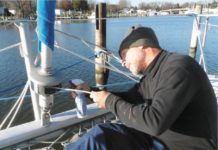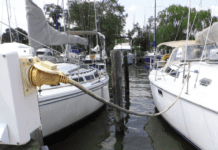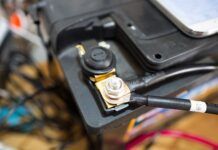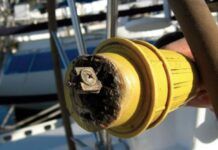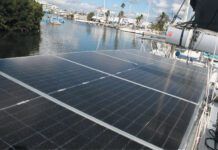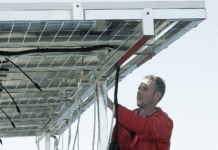Ensuring Safe Shorepower
Power pedestals are handy and safe when they match the power requirements of the boat. Thirty amps for a 30-amp boat. Fifty amps for...
Can You Run a Marine Air-Conditioner on Battery Power?
Our 16,000 BTU MarinAire A/C is sufficient to maintain our Privilege 435 catamaran at under 26.5°C (80°F) on days up to around 35°C (95°F)....
Taking Care of Your 12-Volt Lead-Acid Battery Bank
Marine boat batteries can fail due to various reasons, and understanding these potential failure modes is crucial for ensuring their reliability. Here are some...
Check Your Shorepower System for Hidden Dangers
One of the often overlooked maintenance items in the pre-season rush to the water is the AC shorepower system. Over the years of surveying, Ive amassed a small collection of scary photos from past surveys showing the common examples of neglect to this critical system.
DIY survey of boat solar and wind turbine systems
Many used cruising sailboats on the market will have a couple of solar panels, a wind turbine, or possibly both. But are they working?...
What’s Involved in Setting Up a Lithium Battery System?
Our 2004 Privilege 435 Confianza (Connie for short) came equipped with traditional lead-acid batteries—5 100ah for the house bank and 2 starter batteries. We...
Leaping Into Lithium
Your dock neighbor just switched out her old 12-volt lead-acid batteries for lithium-ion batteries. Should you? The lithium solution will be more expensive, but...
Estimating Total Capacity in an Old Battery
Volt meters, ammeters, and bank monitors can all give you part of the story, but only a draw-down test, performed over 6-24 hours will...
Solar Power and Battery Checkup
Batteries and solar panels can be a black box. We can’t see or hear or feel what is going on inside. They’re not complicated...
Mailport: Carl Alberg, Tinned Wire, Fiberglass Durability
HIGH PRAISE FOR CARL ALBERG
Regarding your report “Small-boat Dreams and Carl Alberg’s Classic Daysailers,” my first sailboat, 25 years ago, was a Pearson Electra....



















